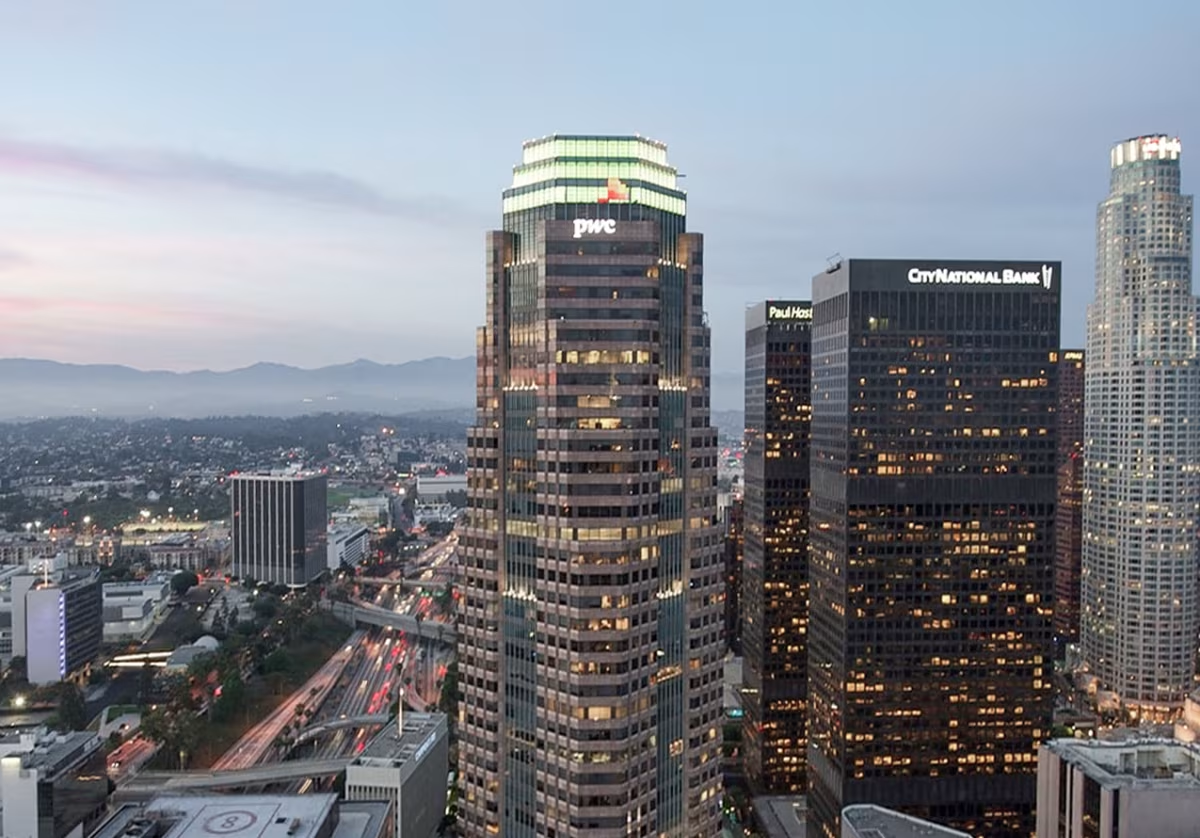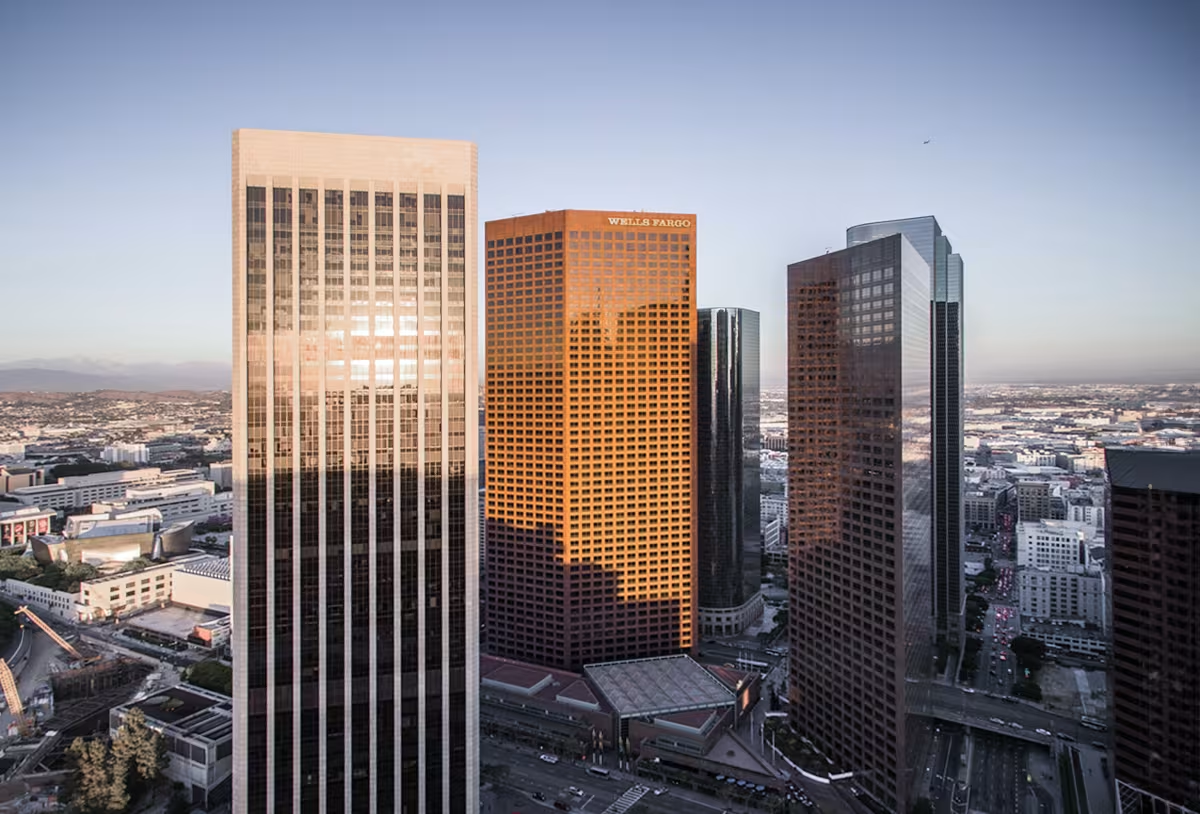Figueroa at Wilshire Building vs Wells Fargo Tower


Comparing the Figueroa at Wilshire Building and the Wells Fargo Tower is interesting because they both rise in Los Angeles, CA, yet they were conceived by two different design teams, Albert C. Martin & Associates and Skidmore, Owings & Merrill, and were completed at different points in time. They were finished more than 7 years apart.
This contrast within the same city allows us to see how different creative minds interpreted the evolving needs of Los Angeles across time.
Let's take a closer look!
Height & Size
The Wells Fargo Tower is clearly the larger tower of the two, both in terms of height and number of floors. It rises to 722ft (220m) with 54 floors above ground, while the Figueroa at Wilshire Building reaches 719ft (219m) with 52 floors above ground.
Wells Fargo Tower also offers more total built-up area, a total fo 1,390,696 sqf (129,200m2), which is about 341,722 sqf (31,747m2) more than what the Figueroa at Wilshire Building offers.
Of course, each project may have faced different briefs or regulatory constraints, which we don't really know about and could also explain the outcome.
Architectural Style
Both the Figueroa at Wilshire Building and the Wells Fargo Tower were designed in line with the aesthetic conventions of the Postmodernism style.
At the time, this style was at the height of its popularity. So both Albert C. Martin & Associates and Skidmore, Owings & Merrill followed what was in many ways expected of them, producing designs that fit comfortably within contemporary architectural norms, rather than breaking with convention.
Uses
Both the Figueroa at Wilshire Building and the Wells Fargo Tower were designed to serve as commercial towers, and that has remained their main use since their completion, serving similar roles in the urban fabric.
Structure & Facade
Both the Figueroa at Wilshire Building and the Wells Fargo Tower rely on a Frame structural system.
A frame structure uses a grid of columns and beams to carry the building's loads. This frees the walls from structural duties, allowing for flexible floor plans and larger windows.
They also employ the same type of facade, a Curtain Wall facade.
A curtain wall is a non-load-bearing facade hung from the structural frame. It is anchored to floor slabs and transfers only its own weight and wind loads, allowing for sleek, glassy exteriors.
| Figueroa at Wilshire Building | Wells Fargo Tower | |
|---|---|---|
| Albert C. Martin & Associates | Architect | Skidmore, Owings & Merrill |
| 1988 | Construction Started | 1981 |
| 1990 | Year Completed | 1983 |
| Postmodernism | Architectural Style | Postmodernism |
| Commercial | Current Use | Commercial |
| 52 | Floors Above Ground | 54 |
| 5 | Floors Below Ground | 5 |
| 219 m | Height (m) | 220 m |
| 97453 | Built-up Area (m²) | 129200 |
| Frame | Structure Type | Frame |
| Steel | Vertical Structure Material | Steel |
| Concrete | Horizontal Structure Material | Concrete |
| No | Facade Structural? | Yes |
| Granite, Glass | Main Facade Material | Reddish Brown Granite, Glass |
| Swinerton | Main Contractor | Turner Construction Company |
| Brookfield Properties | Developer | Thomas Properties Group |
| CBM Engineer | Structural Engineer | Skidmore, Owings & Merrill |
| Eric Orr | Collaborating Artist | Robert Graham |
| CA | State | CA |
| Los Angeles | City | Los Angeles |
| 601 S. Figueroa Street | Address | 333 S. Grand Avenue |